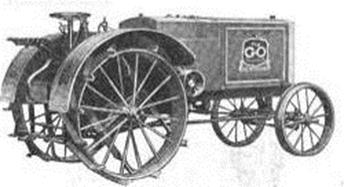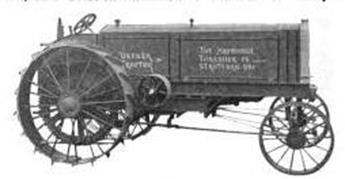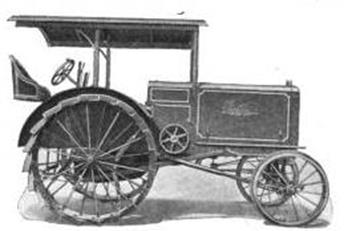




|
Other Friction Drive Tractors |
|
Following the Heiders success, other companies soon followed suit with their own variable speed friction drives. Unlike the earlier IH, Lambert and early Heider designs, the variable speed drive on the Heider C and D offered many advantages other companies recognized. The greatest feature of the Heiders was its overall simplicity, and that simplicity made it easy for other companies to copy. Although Heider had patented portions of their design, enforcement would have been time consuming and costly. No record currently exists that I know of, of any agreement or litigation between Heider/ Rock Island and these companies. The Rockwood company of Indiana is listed as the transmission provider for many of these. These are only brief overviews, check back as I would like to expand these. |
|
Port Huron 12-25 |

|
Copy write 2011, 2012, 2013 not for republication or sale without express written consent. All images are the property of their respective owners and are not to be reused without their express permission. |



Macdonald Threshing’s Decker 12-24 |
The GO Tractor 12-22 and 14-28 |
Port Huron 12-25 |
|
The Port Huron 12-25 was the first (and only?) foray of the venerable Port Huron Company into gas tractors, who had been manufacturers of steam traction engines. Featuring a 4 3/4 x 6 Chief engine the Port Huron made a very respectable 20-28 hp on Nebraska Test #069 in 1920. The bad news was that it required a replacement carbonator and blew out all four spark plugs beginning the test (early Port Hurons were listed with a 4 x 6 Erd engine). The Port Huron was only manufactured from 1918 to 1922 and was listed in 1918 for $1,700. I know of no remaining Port Huron 12-25’s. |
|
The Macdonald & Macpherson Co of Ontario was founded in 1877 to build threshing machines for the Canadian market. A successful business, in1911 the company was reorganized as the Macdonald Threshing Co. after James Macdonald’s death. Although threshing machines were the companies mainstay, they started selling other companies steam engines and in 1906 started building their own under the “Decker” name (from a nickname for their threshing machines that had become their trademark name). After WW1, Macdonald dropped their steam line to concentrate on bringing a gas tractor to market. One of the designs they chose closely resembled the Heider and used the same style of friction drive and utilized a Doman 4 3/4 x 6 engine and advertised as a 12-24. A 15-32 gear driven tractor with Waukesha engine was also developed. Most interestingly though, According to Rick Mannen, a version of the 12-24 was developed with a half track design. Rick posted an interesting picture of it on smokestack HERE along with a number of other tractors. The Decker friction drive did not last long and the company was sold in 1922. |
|
Of the three tractors here, the GO tractor is probably the most successful, although still a very limited production. The GO tractor was initially offered under the names Denning and National, but was mostly marketed under the GO name. The Denning Tractor Co of Cedar Rapids, IA developed what it marketed as the Denning Tractor around 1916 after producing a couple of smaller tractors. In 1919, the General Ordnance Co., which had so far been involved in building armaments for the US. Navy for WW1, purchased the Denning Tractor Co. The Denning was briefly renamed the National, and then the GO for the initials of General Ordnance. Advertising from GO traded heavily on their wartime history but also advertised 8 years of service in ads for the GO in 1919. This is odd as the earliest I was able to find mention of a Denning design was 1913. There are supposedly 13 remaining GO tractors known, with only a handful in running order. Dick Bockwoldt is the owner of one of these.
|
|
Macdonald Decker 12-24 |
|
General Ordnance 12-22 GO |
|
< Return to List |